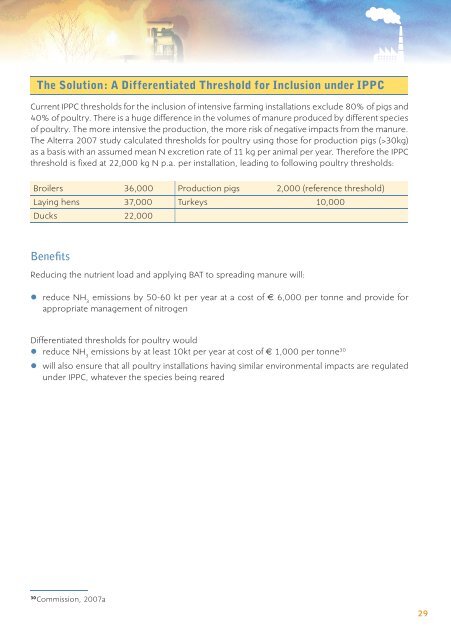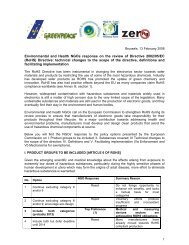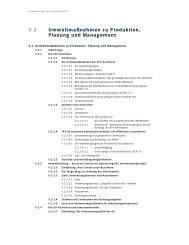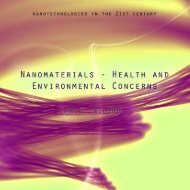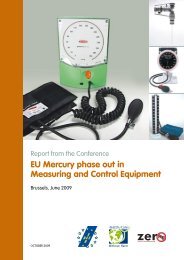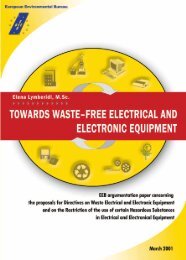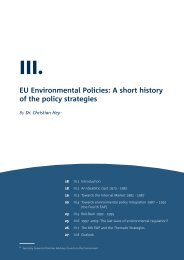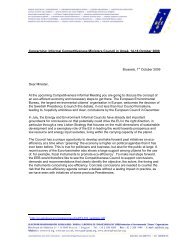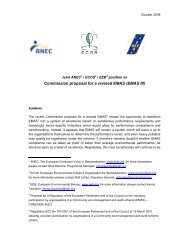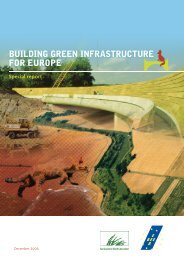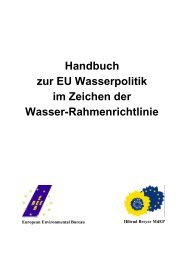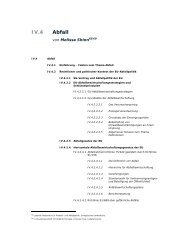A push for cleaner industrial production - EEB
A push for cleaner industrial production - EEB
A push for cleaner industrial production - EEB
You also want an ePaper? Increase the reach of your titles
YUMPU automatically turns print PDFs into web optimized ePapers that Google loves.
The Solution: A Differentiated Threshold <strong>for</strong> Inclusion under IPPC<br />
Current IPPC thresholds <strong>for</strong> the inclusion of intensive farming installations exclude 80% of pigs and<br />
40% of poultry. There is a huge difference in the volumes of manure produced by different species<br />
of poultry. The more intensive the <strong>production</strong>, the more risk of negative impacts from the manure.<br />
The Alterra 2007 study calculated thresholds <strong>for</strong> poultry using those <strong>for</strong> <strong>production</strong> pigs (>30kg)<br />
as a basis with an assumed mean N excretion rate of 11 kg per animal per year. There<strong>for</strong>e the IPPC<br />
threshold is fixed at 22,000 kg N p.a. per installation, leading to following poultry thresholds:<br />
Broilers 36,000 Production pigs 2,000 (reference threshold)<br />
Laying hens 37,000 Turkeys 10,000<br />
Ducks 22,000<br />
Benefits<br />
Reducing the nutrient load and applying BAT to spreading manure will:<br />
• reduce NH emissions by 50-60 kt per year at a cost of € 6,000 per tonne and provide <strong>for</strong><br />
3<br />
appropriate management of nitrogen<br />
Differentiated thresholds <strong>for</strong> poultry would<br />
reduce NH emissions by at least 10kt per year at cost of € 1,000 per tonne30<br />
•<br />
3<br />
• will also ensure that all poultry installations having similar environmental impacts are regulated<br />
under IPPC, whatever the species being reared<br />
30<br />
Commission, 2007a<br />
29


